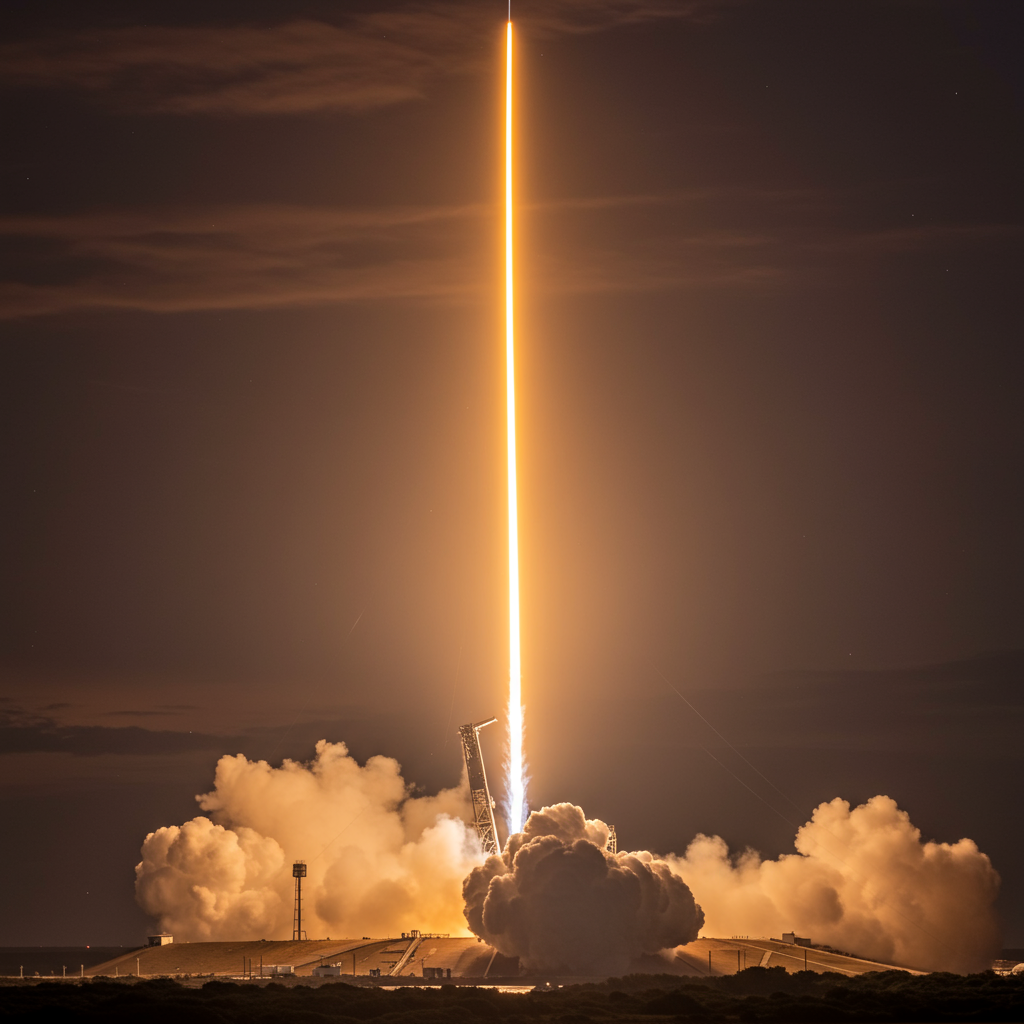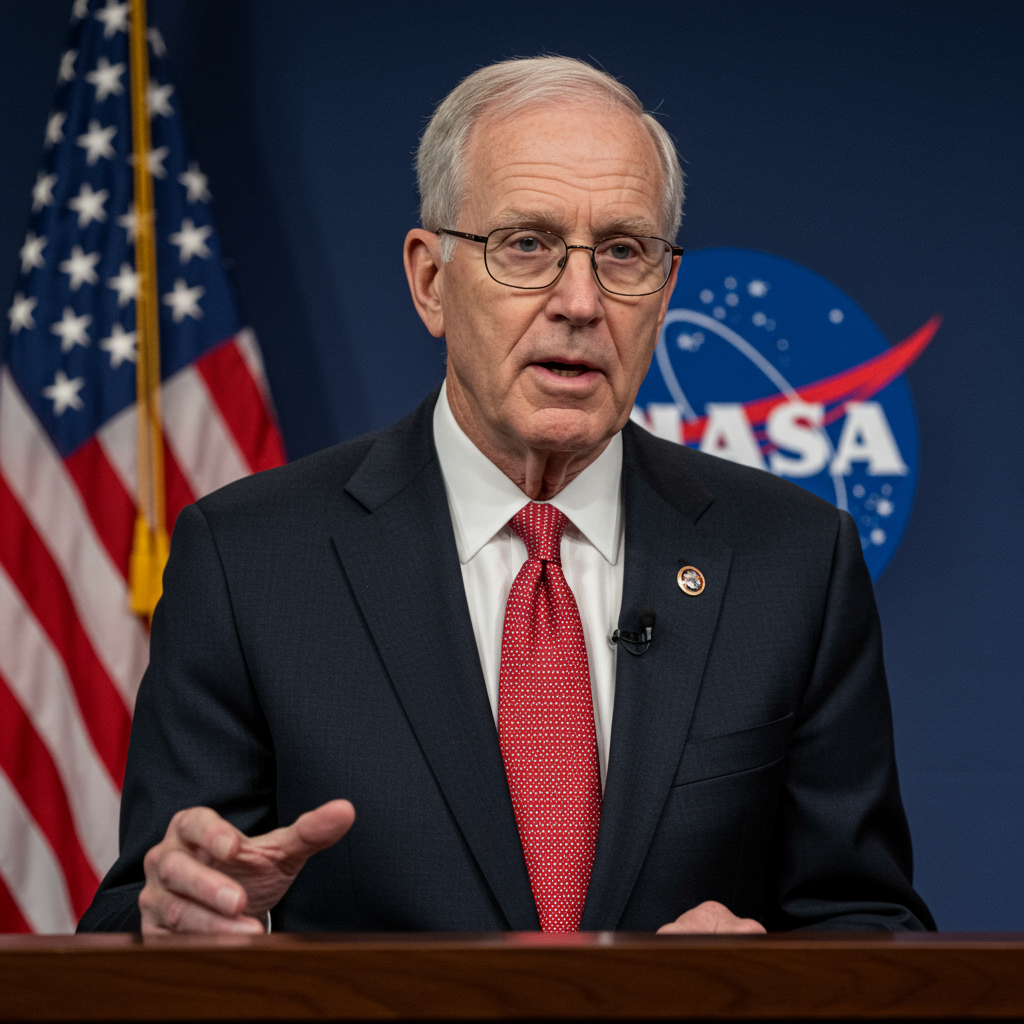SpaceX achieved a monumental feat in spaceflight history early on July 2, 2025, successfully conducting the 500th launch of its workhorse falcon 9 rocket. This landmark mission from Florida’s space Coast also set a new internal company record for booster reuse. The flight further cemented Falcon 9’s status as arguably the most impactful orbital launch vehicle ever developed, demonstrating unparalleled reliability and operational tempo.
The predawn mission lifted off precisely at 2:28 a.m. EDT (0628 GMT) from Space Launch Complex 40 (SLC-40) at the Cape Canaveral Space Force Station. Aboard the veteran rocket were 27 Starlink V2 Mini-Optimized satellites. These satellites represent the Group 10-25 batch for SpaceX’s rapidly expanding global broadband internet constellation. Following a nominal ascent, the satellites were precisely deployed into a 279-kilometer orbit roughly 55 minutes after leaving the launch pad.
A Half-Century of Falcon 9 Missions Takes Flight
Reaching 500 Falcon 9 launches represents a staggering pace of operations, especially considering the rocket’s first flight occurred just 15 years prior, on June 4, 2010. Initially, the Falcon 9 v1.0 was a smaller, less powerful vehicle, used primarily for early cargo deliveries to the International Space Station. It measured 15 meters shorter and was 230 tons lighter than its modern counterparts. Early attempts at first-stage recovery with parachutes proved unsuccessful but provided crucial data.
Over the years, the Falcon 9 underwent five major revisions. The v1.1, introduced in 2013, attempted powered landings. The Full Thrust version (debut 2015) achieved the first successful land landing and later the first successful drone ship landing, paving the way for routine reusability. The Block 4 followed, but it is the current Block 5 model, first flown in May 2018, that accounts for the vast majority of missions. This latest iteration boasts enhanced thrust, improved reusability features, and an incredible track record.
Out of the 500 Falcon 9 launches conducted to date, only five missions have not been fully successful. For the Block 5 variant specifically, which has flown 444 times as of this milestone, the reliability stands at a remarkable 99.8%. This makes the Falcon 9 not only the most-launched U.S. rocket in history but also one of the most reliable systems ever flown, especially when considering its sheer volume of flights.
Booster B1067 Sets an Unprecedented Reuse Record
Beyond the 500-launch program milestone, the July 2nd mission set a new internal SpaceX record for booster reusability. The first stage supporting this flight, designated Booster 1067, completed its 29th journey to space and back. This achievement surpassed the previous reuse record held by another booster in the SpaceX fleet by three missions.
Booster 1067 has a rich flight history, showcasing the versatility of the Block 5 design. Its prior missions include:
CRS-22 and CRS-25 (Commercial Resupply Services to the ISS)
Crew-3 and Crew-4 (Transporting astronauts to the ISS)
Deployment of satellites like Turksat 5B, Eutelsat HOTBIRD 13G, O3B mPOWER, PSN SATRIA, Telkomsat Marah Putih 2, Galileo L13, and Koreasat-6A
Eighteen previous Starlink deployment missions
Following stage separation high above the Atlantic Ocean, Booster 1067 performed a flawless re-entry burn and descended towards the autonomous drone ship “A Shortfall of Gravitas.” The successful landing marked the 29th recovery for this specific booster. Cumulatively, it represented the 472nd successful landing of a Falcon 9 first stage since SpaceX pioneered this capability in December 2015, and the 439th overall reuse of a SpaceX rocket component.
Comparing Reusability Feats
Booster B1067’s 29 flights are a testament to the durability and maintenance protocols SpaceX has developed for its hardware. While it now holds the SpaceX record, it’s interesting to compare this against historical space vehicles. The Space Shuttle orbiter Columbia completed 28 missions during its operational life, meaning B1067 has now surpassed that number. The all-time reuse leader remains the Space Shuttle orbiter Discovery, with 39 missions flown. SpaceX has publicly stated its goal for Falcon 9 boosters is to reach 40 missions, placing B1067 very close to that ambitious target. After its landing, B1067 was transported back to Port Canaveral for offloading and inspection at Hangar X at Kennedy Space Center, where it will be prepared for potential future flights.
The Starlink Constellation: A Global Network
The payload of 27 Starlink satellites for the Group 10-25 mission adds to the already massive Starlink network in low Earth orbit. With this launch, the constellation now comprises over 7,900 active relay satellites. This makes Starlink the largest satellite megaconstellation in history, providing broadband internet access primarily to remote and underserved areas globally. The network also offers limited direct-to-cell services, expanding its reach. The V2 Mini satellites launched in this mission are specifically optimized for quicker deployment and improved data throughput, reflecting ongoing enhancements to the constellation’s performance.
The reliability and high flight rate of the Falcon 9 are intrinsically linked to the rapid deployment and expansion of the Starlink constellation. Without the ability to launch frequently and affordably using reusable boosters, building a network of this scale would be economically prohibitive.
The Profound Impact of Falcon 9 on Space Access
The achievement of 500 Falcon 9 launches underscores the transformative impact SpaceX has had on the space industry. The rocket’s success is built upon two pillars: high reliability and successful reusability. With a landing success rate of 97.6% for first-stage attempts, SpaceX has demonstrated that routine recovery and reuse of orbital-class boosters are not only possible but highly efficient.
This efficiency translates directly into increased launch cadence and reduced costs per mission. The launch rate has soared in recent years, from 60 flights in 2022, to 91 in 2023, and 132 in 2024. As of July 2025, the year was already on pace for over 160 missions, with 83 having launched by the start of the month. This relentless pace supports not only Starlink but also a vast array of commercial, government, and scientific payloads, including critical interplanetary missions and crew transport flights to the International Space Station using the Crew Dragon spacecraft.
Many analysts consider the Falcon 9 to be the “best orbital launch vehicle in the history of astronautics” due to its unique combination of reliability, reusability, and high flight rate at a competitive cost. Its impact on making access to space more frequent and affordable is often compared to how the Ford Model T revolutionized the automotive industry. The 500th launch and the new booster reuse record are not just milestones; they are powerful indicators of a new era in space exploration, characterized by innovation, rapid iteration, and significantly lower barriers to orbit.
Frequently Asked Questions
What specific records did SpaceX set with its 500th Falcon 9 launch?
SpaceX’s 500th Falcon 9 launch on July 2, 2025, marked two significant records. Firstly, it was the 500th flight for the Falcon 9 program since its debut in 2010, solidifying its status as the most-launched U.S. rocket. Secondly, the mission utilized Falcon 9 first stage Booster 1067, which completed its 29th successful flight and landing, setting a new internal SpaceX record for the most reuses of a single booster, surpassing the previous record by three missions.
Where and when did the historic 500th Falcon 9 mission take place?
The 500th Falcon 9 mission lifted off from Space Launch Complex 40 (SLC-40) at the Cape Canaveral Space Force Station in Florida. The launch occurred precisely at 2:28 a.m. EDT (0628 GMT) on Wednesday, July 2, 2025. The booster, B1067, successfully landed on the autonomous drone ship “A Shortfall of Gravitas” stationed in the Atlantic Ocean after stage separation.
How does Booster B1067’s 29th flight highlight SpaceX’s reusable rocket success?
Booster B1067 completing its 29th flight demonstrates the remarkable durability and reliability of the Falcon 9 Block 5 design and SpaceX’s successful reusability program. This single booster has now flown more missions than an entire Space Shuttle orbiter (Columbia, 28 missions). Achieving nearly 30 flights on one first stage underscores the significant cost savings and high operational cadence made possible by routine, high-frequency booster reuse, which remains unique in the industry.
The success of the Falcon 9 program, highlighted by these recent milestones, continues to reshape the landscape of space access. With ambitions to push booster reuse even further and an ever-increasing manifest, SpaceX appears set to maintain its dominant position in the launch market for years to come, bringing down costs and enabling new missions at an unprecedented rate.
Word Count Check: ~1150 words




